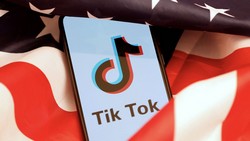Social Media Becomes a New Battleground for Obama and Romney
Nearly two-thirds of all Americans are using social networking websites, a study from the Pew Research Center revealed in May 2012. As the amount of social media users continues to grow, so does the question of whether or not social media will play a crucial role in this presidential election.
In order to express their message and to gain support from the American public, presidential candidates in recent years have chosen to not only use, but to embrace social media as their method of engaging voters in the election process.
Former presidents such as Franklin D. Roosevelt mastered the radio; John F. Kennedy and Richard Nixon made use of the television; President Barack Obama put the spotlight on social media in his 2008 presidential victory, establishing Facebook and Twitter’s status in the political election process.
After President Obama’s victory, the 2008 presidential election came to be known as “the social media election,” because of the Obama team’s use of the Internet to both raise money and engage in grassroots networking.
Since that time there has been an explosion in the variety and reach of the digital tools made available to voters, campaigns, and the candidates themselves, providing powerful and significant new ways to lobby for both finances and votes. Today, Republicans and Democrats alike are engaging in all-out social media war over the attention of the American public.
Despite the common notion that social networking appeals specifically to younger generations, its use is growing exponentially amongst all age groups. Although 86 percent of Americans ranging between ages 18 and 29 comprise most avid social network users, the Pew Research Center revealed that 72 percent of those between age 30 and 49 are active on web based social media, as well as 50 percent over the age of 50.
The number of social media users has grown in direct correlation with voter turnout, based on the 2008 election. According to the U.S. Census Bureau report on the 2008 Presidential Election, “Overall, 131 million people voted in 2008, a turnout increase of about 5 million people since 2004. During this same 4-year period, the voting-age citizen population in the United States increased by roughly 9 million people. In 2008, 71 percent of voting-age citizens were registered to vote.”
Social media took center stage during the 2008 presidential campaign and has been widely adopted as a viable and necessary means to reach American voters ever since. President Barack Obama was able to adapt to the ever-changing means of communication used by American voters in 2008, and continues to utilize social media today– he currently has more than 28 million Facebook “likes” and close to 20 million followers on Twitter.
Twitter currently provides real- time feedback on presidential debates, a much faster approach than traditional polling. As a result, presidential campaigns have been paying close attention to the discussions surrounding their candidates. These discussions offer interesting feedback as to whether the candidate’s message is being received.
According to Professor Robert Scott of the communication department, “It seems that Facebook and Twitter have been the most commonly used social tools during this campaign season, although others such as Reddit and Flickr have taken on a significant presence as well.”
“For the first time, social media has become more ubiquitous across multiple demographics and is likely to have more of an impact on elections than in previous years. In fact, some analysts have already taken to calling the current presidential race the ‘First Twitter Election,’” Scott explained.
He also described a new aspect of the social networking site: Twitter’s Political Index. Alsocalled “Twindex” for short, it has been tracking campaign-related tweets for months to produce a day-by-day guide to the online conversations involving the candidates. “The index then creates a sentiment score relative to all tweets. The company hopes that it will complement traditional polling techniques to provide a more complete forecast,” Scott said.
Compass Labs, a social media platform, released a comparison of the likes and dislikes of Facebook supporters of both Mitt Romney and Barack Obama earlier this week. According to their analysis, “Obama currently has 28,365,075 fans to Romney’s 6,446,941 fans on Facebook — but Romney has the edge on both the amount of online chatter about candidates with 3,340,348 people talking about him, against Obama’s 3,051,585.”
The analysis also found that in terms of demographic breakdown, “the majority of Romney’s supporters – 43 percent – are older than 55 years of age, while Obama’s appeal is spread more evenly across age groups: 24 percent aged over 55, 17 percent aged 45-55, 18 percent 35- 45 years of age, 21 percent aged 25-35 and 20 percent aged 18 to 25.” “Not surprisingly, Romney’s followers tend to be older and Obama’s skew younger. And while the President has about 22 million more fans than his challenger, Romney’s fans tend to be more socially engaged,” Scott said.
Professor Mary Harris of the Communication Department also offered an interesting outlook as to how social media is impacting elections. “Commonly known is that social media played a critical role in the last presidential election, and this election is also being influenced by this type of networking and online content,” she said.
Harris believes that Facebook has a major influence over voter turnout. “One reason for this is that Facebook is very versatile, with features ranging from large image sharing to brief or lengthy status updates to sharing videos that can be viewed within the news feed itself. It is a platform that encourages ease of use with a combination of graphics, text, and video that can be accessed quickly and with little effort,” she explained.
Harris continued, “People can be influenced by their friends on Facebook and other social networks by seeing what their friends share, like, and write. Today, political opinions and voting decisions are often openly shared through social media; this has become a normal thing to do for many users, where it once may have been more private, so this openness can sway public opinions and voter turnout alike.”
In recent years, many researchers have been working diligently to find a link between social media and elections. According to an article published in Nature, the International Weekly Journal of Science on September 12, “About 340,000 extra people turned out to vote in the 2010 U.S. congressional elections because of a single election-day Facebook message, estimate researchers who ran an experiment involving 61 million users of the social network.”
The study, published September 12, is “the first to demonstrate that the online world can affect a significant real-world behavior on a large scale,” the journal’s website explains.
The journal’s website describes the experiment in full. The study involved all U.S. Facebook users over the age of 18 who had accessed the website on November 2, 2010 – the same day as the elections. It found that about 611,000 users, or a small 1 percent of all Facebook users received an “informational message” at the top of their news feeds, which encouraged them to vote by providing a link on local polling places and included a clickable “I voted” button along with a counter of Facebook users who clicked it, the journals website explains.
Just to show how strong the influence is of Facebook users by their friends, the journal’s website said, “about 60 million users (98 percent) received a ‘social message’, which included the same elements but also showed the profile pictures of up to six randomly selected Facebook friends who had clicked the ‘I voted’ button.”
The website continues by explaining that the researchers estimate that the social message directly increased turnout by about 60,000 votes. A further 280,000 people were indirectly nudged to the polls by seeing messages in their news feeds, for example, telling them that their friends had clicked the ‘I voted’ button.
It may not sound like much, but in a close election such as the 2000 presidential election, where Florida’s vote was contested over just a small amount of votes, that kind of bump could make the difference between a win and a loss.
As the generation essentially sponsoring the social media movement, college students fall in the most active of the social media demographics. Social media as an approach to voting has the greatest impact on the youth, relative to all other sources.
Senior communication major at the University, Nicole Shapiro, stated, “As a whole I believe our generation is more likely to ignore a longer source of information in exchange for the more fast-paced social media options.” She went on to state that, “While adults make specific time to access social media through out the day, it is a constant source of information for the youth. As social media has progressed, I have personally developed a more global awareness; something I would never have done without Facebook and Twitter.”
In combination with reaching a larger percentage of American youth, social media is also capable of reaching other specific demographics. According to a Forbes Magazine article by Deborah L. Jacobs published June 25, 2012, “Politicians who want to win the women’s vote should take a lesson from consumer marketing. In that arena, women use blogs, social media platforms and web site comment spaces to influence each other’s purchasing decisions. They will use the same communication tools to affect the 2012 presidential election.”
The combination of fast-paced social media and hot-button topics in this election, such as war, debt, and abortion, any major political statements have the potential to cause a swing in public opinion. The election of 2012, just like 2008, is an election of firsts. American youth, women, race, and various other hidden demographics played an enormous role in 2008, and with the progression of social media, are likely to do so again in 2012.


